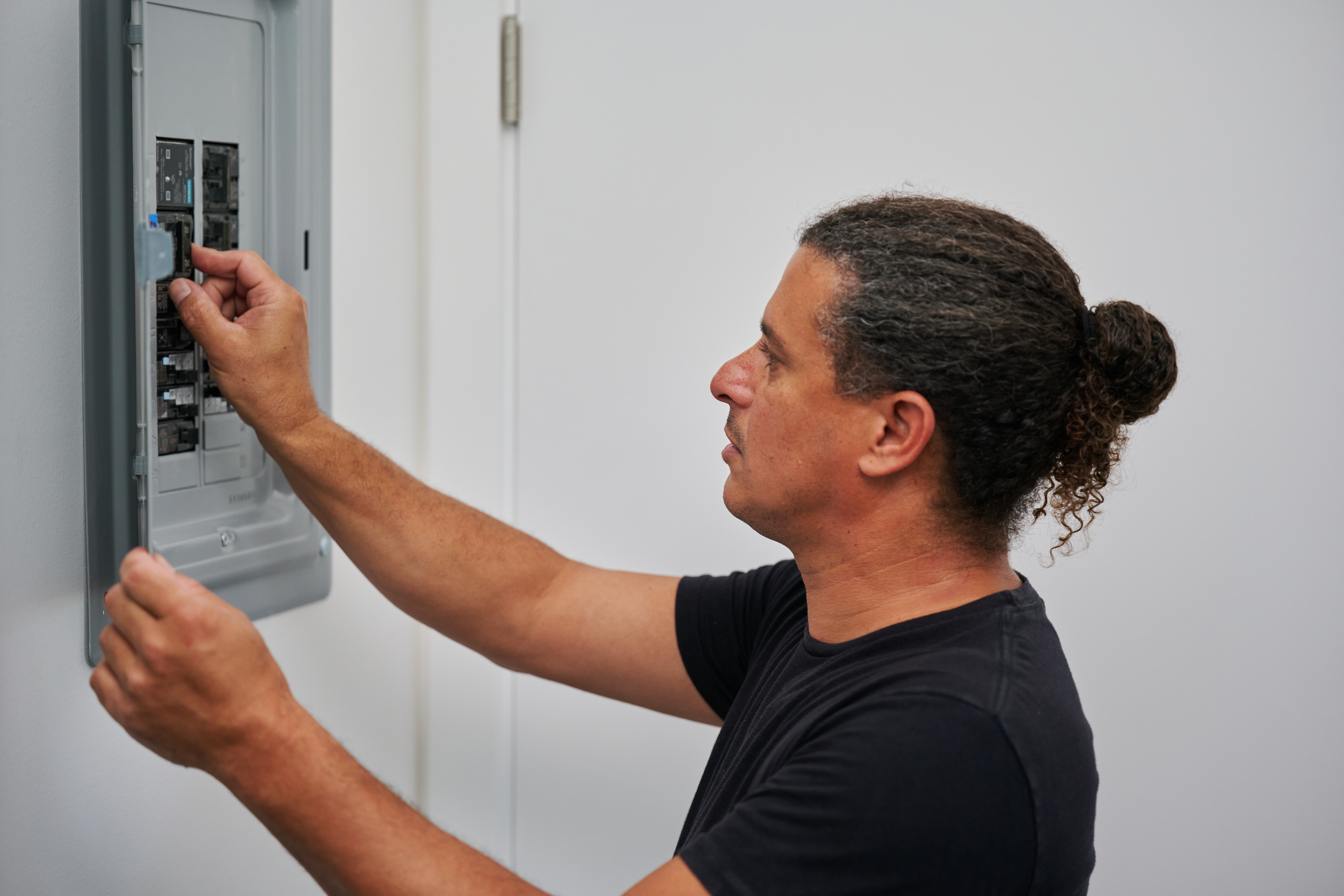
Electrical panel replacement costs $530 to $2,100, depending on the location, the type of hardware, and any required building materials.
Uncovering the direct-burial wire mystery


Direct-burial cable and wire are built to be buried.
Pros use underground feeder (UF) cable for residential projects.
It’s best practice to bury UF wire and cable underground.
People often use UF wire and cable for sprinklers and pet fences.
Call 811 before attempting to dig any wiring trenches.
A direct-burial wire or cable is a specific type of electrical wiring made to run underground in a trench. But can you use direct-burial wire above ground if you want to? Direct-burial wire is sturdier than the average outdoor offerings, as it must withstand moisture, insects, rodents, soil pressure, and temperature changes. However, though it would likely fare well in the elements, it’s safer to use it in its intended location: below the soil.

In home-related projects, underground service entrance (Type USE) and underground feeder (Type UF) cables are the two most commonly used types of wiring. Utility professionals with your local municipality handle Type USE cable, which electricians mostly use to connect power from a transformer to individual homes.
Protected by a hard plastic casing, Type UF is water- and sunlight-resistant and is used both indoors and outdoors. This type of cable can connect power to a detached garage or backyard shed from your home.
Direct-burial cable is protected by a sturdy, thick thermoplastic sheath and typically has a specific UL (Underwriter Laboratories) rating signaling that it has passed certain tests that evaluate and confirm its durability. Additionally, though neither Type UF nor Type USE cables require the use of conduit (a protective tube), conduit can provide wires with a bit of extra safety on top of their sheathing and other durable properties.
Pro tip: Be careful not to mistake just any thick wire for a direct-burial wire. Look for brightly-colored labeling that confirms the wire is for direct-burial use. (This labeling is necessary to be compliant with the National Electrical Code®.) If you’re unsure what a direct-burial wire looks like, you shouldn’t be the one digging around your yard to find it. Leave any complex electrical work to the pros.
The direct-burial wire or cable’s trench should be deep enough that the cable doesn’t shift or move upward toward the surface over time. Additionally, it shouldn’t be buried shallow enough to be accidentally discovered in a yard. Burial depth can depend on different factors, including the wire or cable type and application. Here’s how deep a cable or conduit should be buried based on type and location:
UF cable: 18 inches for residential uses; 24 inches for most other uses
PVC conduit: 18 inches for most uses
Metal conduits: 18 inches for residential uses; 6 inches for most other uses
According to National Electrical Code® article 300.5(A), the only time a direct-burial wire does not have to be underground is if it's under a building, in which case the minimum cover requirement is 0 inches.
Even though they’re typically not above ground, UF wire and cable are durable and engineered to withstand everything from adverse weather to aggressive rodents. While it can survive above ground, it’s best to bury direct-burial wire underground as directed (and implied by the name).
UF wire and cable may not pose the same threat as a downed power line, but there are still potential hazards to leaving them exposed above ground. By securing and running power lines underground, you’re increasing their reliability and longevity as well as your safety, as they’re away from potential threats such as storms and foot traffic.
Thanks to their sturdy nature, direct-burial wire and cable are used in several different instances for varying projects. Some of the more common uses for direct-burial wire and cable include:
Underground power lines
Fiber optics
Post lights
Running electricity to and from your home
Pet fencing
Golf courses
Phone and other telecommunication cables
Before you start digging, there are a few things you’ll want to do to prepare for the installation of a direct-burial wire or cable. If you’re a new pro looking for a few tips on installation, we’ve got them. If you’re anyone else, stop right now, and don’t attempt to mess with your home’s intricate electrical systems.
Call 811, the national Call Before You Dig hotline, before starting the project. Doing so lets local utility companies know to come out and mark any utility lines so you can avoid hitting them accidentally.
Check for permit requirements (and, equally as important, the cost of building permits). Depending on your area, you may need to get a permit before starting an electrical project.
Calculate the voltage drop if you’re running a long-distance direct-burial wire. This helps determine whether you need a larger cable to minimize voltage loss over long distances.
Map out your property, noting where underground wiring was buried. This is an excellent reference point should you need to make repairs or want to start another project in the future.
Electrical projects can be overwhelming and incredibly dangerous if you’re unsure of what you’re doing. One incorrect step can lead to anything from an electrical malfunction to a fatal shock. This isn’t a project where you can “just wing it.” Instead, call a pro if you’ve got questions about your direct-burial cables or think you need to replace them. A local electrician can install direct-burial wire or cable on your property and answer any questions you have about them.
From average costs to expert advice, get all the answers you need to get your job done.

Electrical panel replacement costs $530 to $2,100, depending on the location, the type of hardware, and any required building materials.

Electrical subpanels allow you to use appliances and electronics safely. This cost guide explains the important factors to consider when installing a subpanel.

Nothing’s more luxurious than your own hot tub after a long day. Maximize your enjoyment by hiring an electrician to wire your hot tub properly.

Ready to upgrade your front door and learn how to wire a doorbell? You may be able to handle this relatively simple DIY installation without an electrician.

If your home contains original aluminum wiring, you may want to take action to avoid danger. Learn why aluminum wires are hazardous and how you can address these issues safely.

Wondering who to hire for electrical work on home additions? Compare electricians and electrical contractors to see how pros get the job done.